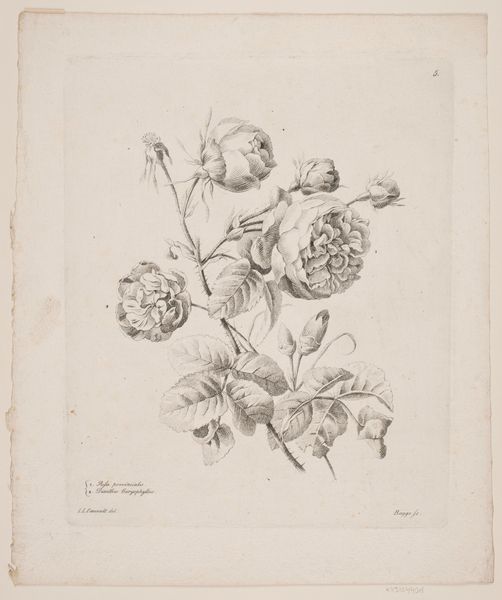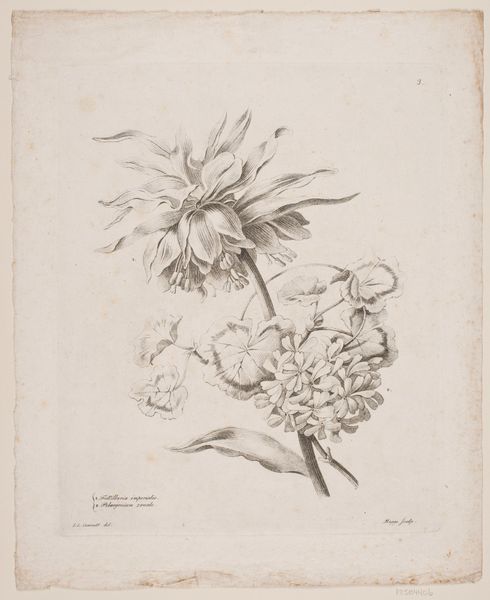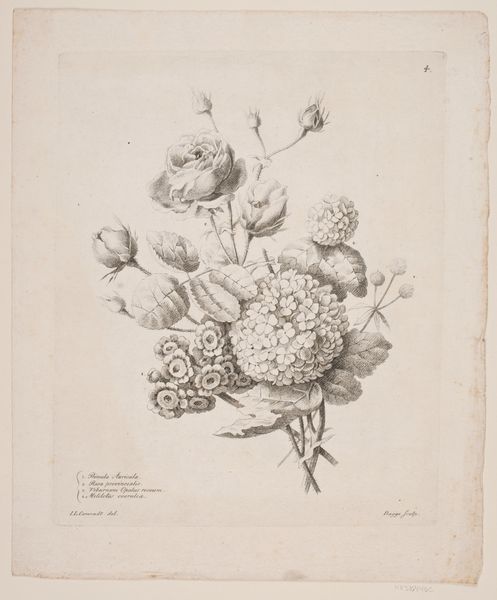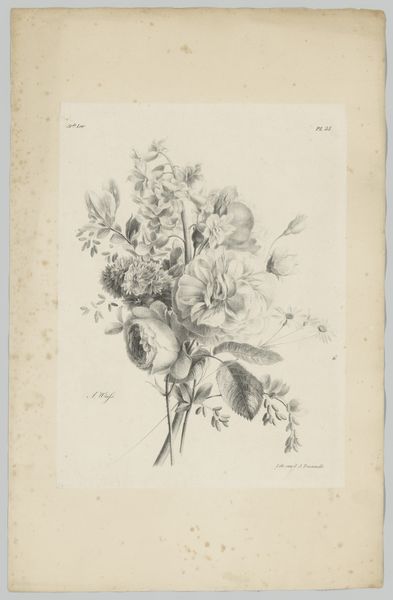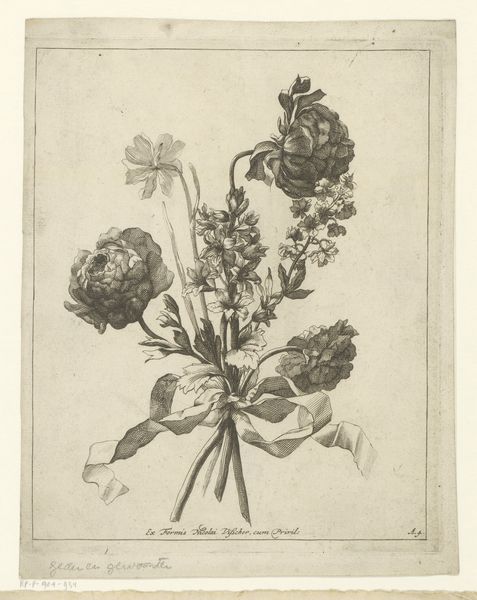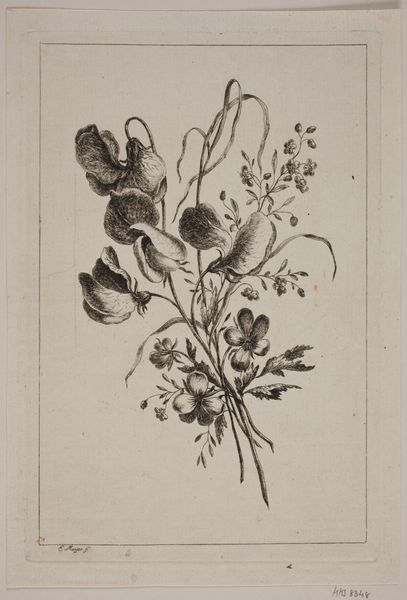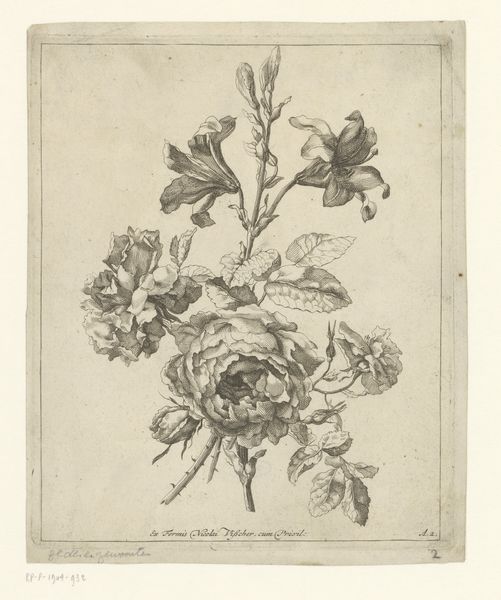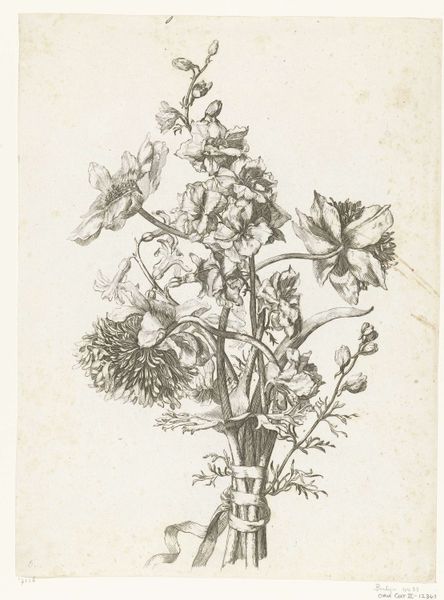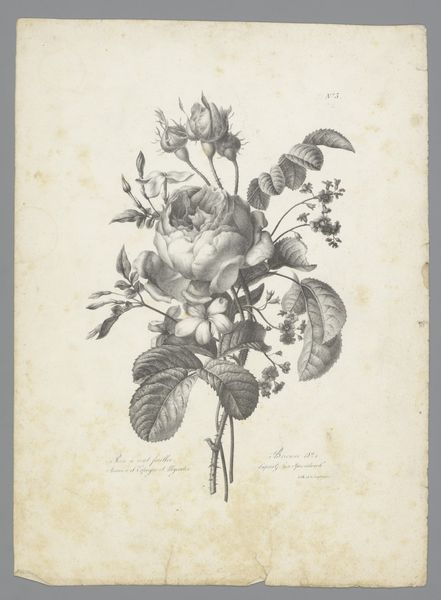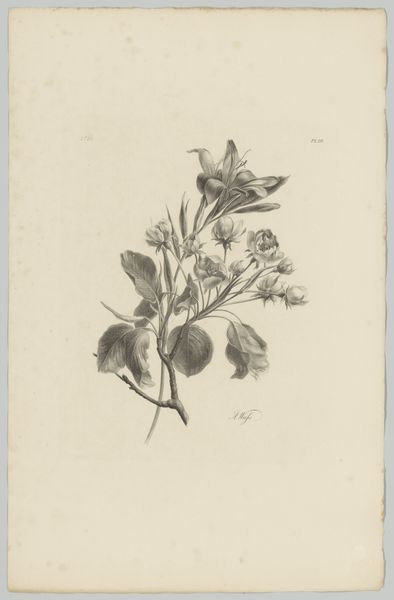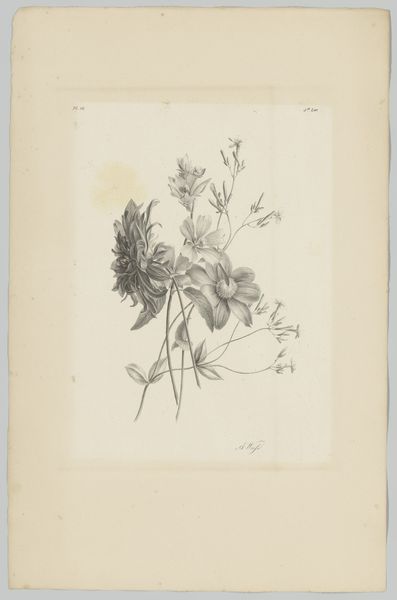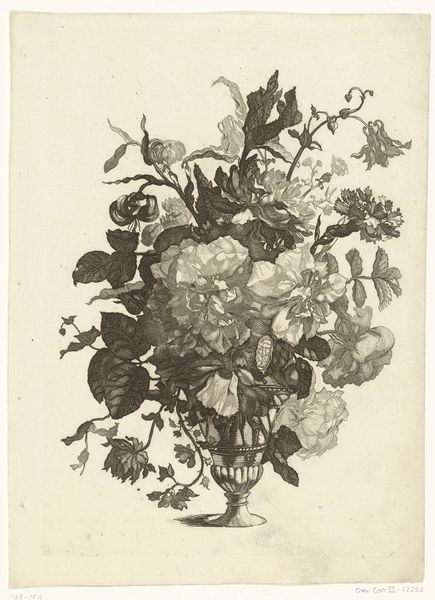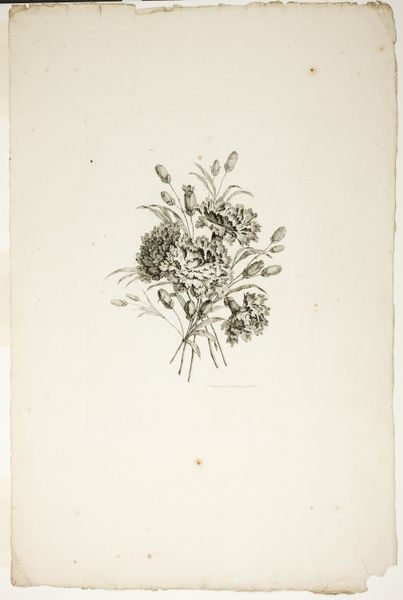
drawing, print, pencil, engraving
#
drawing
# print
#
pencil sketch
#
romanticism
#
pencil
#
engraving
#
realism
Dimensions: 291 mm (height) x 239 mm (width) (plademaal)
Curator: Here we have "Blomster," created in 1816 by Oluf Olufsen Bagge, currently residing at the SMK in Copenhagen. It's a delicate work, rendered in pencil and engraving, depicting a small arrangement of flowers. What are your initial impressions? Editor: It strikes me as quite melancholic, almost like a memorial. The delicate lines and monochrome palette lend it a sense of faded memory, or a record of something already passed. Curator: That’s an interesting observation. The individual flowers – poppy, iris, hydrangea and love-in-a-mist, and leaves, so carefully delineated, hint at specific symbolic meanings that would have been very potent for viewers at the time. For instance, the poppy often symbolized sleep, oblivion or death. The iris connected with faith, hope and wisdom, or, alternatively sorrow. Editor: And given the social context of the early 19th century, particularly in the wake of the Napoleonic Wars, such symbolism resonates deeply. These flowers, though beautiful, carry the weight of loss, mortality, and perhaps a yearning for a return to peace and simpler times. Do you see the artist drawing on classical vanitas traditions? Curator: Absolutely. Floral vanitas was particularly popular during this era, laden with implications around beauty and brevity of life, faith, hope and resurrection as consolatory devices. Consider Bagge's precise technique, creating form and shadow in engraving to render texture almost palpable. Editor: And the choice of flowers reinforces this. Hydrangeas, for instance, although prized, are also reminders of transition and decay. I'm struck by the fact that such a delicate medium – pencil and engraving – is used to convey such weighty themes, speaking to notions of how nature can record, resist and survive traumas witnessed. Curator: Indeed, there’s a quiet power in the subtle ways that botanical forms serve as carriers of our emotional landscapes, marking personal loss within a time of massive upheavals, something that art uniquely offers across centuries and cultures. Editor: Well, it reminds me that even in the smallest details, like a drawing of flowers, we can find profound reflections on our history, society and ultimately the enduring nature of the human condition.
Comments
No comments
Be the first to comment and join the conversation on the ultimate creative platform.
